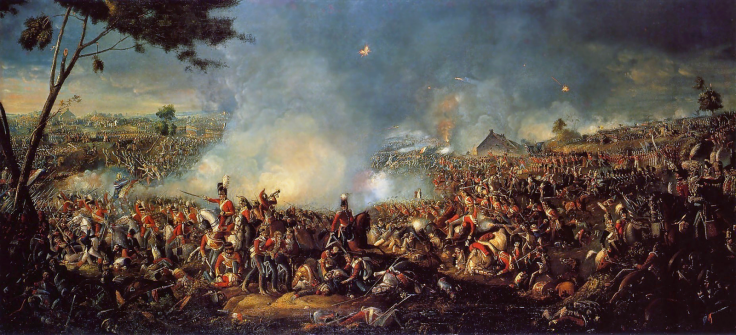Mass grave of British soldiers killed at Battle of Waterloo 'buried in orchard'
Human bones from the battle in present-day Belgium were ground down and turned into fertiliser.
Mystery surrounding the whereabouts of thousands of soldiers killed in one of the bloodiest battles fought by the British Army could be revealed in a soldier's memoir. The location of the burial site has been lost for centuries, with only one intact skeleton found under a car park.
Gareth Glover, a military historian has discovered a book which he believes contains an eyewitness account of a mass grave that was used to inter 7,000 British and allied corpses. Over the course of the Battle of Waterloo in 1815, there were French losses of around 24,000 and approximately 17,000 casualties on the allied side.
Rank and file soldiers were not repatriated to the UK, unlike the bodies of officers in Wellington's army. Instead, the teeth from lowly troops were extracted and turned into dentures, while any valuables left on the corpses were taken.
It was claimed that human bones were ground down to make fertiliser and a British newspaper reported that Yorkshire bone-grinders had imported a million bushels of bone, according to the Sunday Times.
Belgian authorities requested Waterloo Uncovered, a team of British archaeologists which employs ex-servicemen, some with post-traumatic stress disorder (PTSD), to excavate under a car park next to Hougoumont farm, the location for some of the worst casualties.
In the course of his research at John Rylands Library in Manchester, Glover found a memoir by a Scots Greys sergeant who had fought at Waterloo. William Clarke gave a first-hand account of the bloody conflict at Hougoumont Farm, describing the courtyard in horrific detail as filled with a "large heap of dead bodies, straw, stones, arms, accoutrements and wreck of every description".
Crucially, Clarke also claimed that: "Seven thousand men were buried in the orchard a few days after; they were buried by the peasantry who were called in from the country around to dig trenches for the reception of the dead throughout the field."

This new evidence received support from Tony Pollard, archaeological leader of Waterloo Uncovered. "We know there was very heavy fighting in that orchard. We have found high numbers of musket balls from both sides. I suspect [Clarke] was right that he saw bodies buried in the orchard but the idea of 7,000 in one pit is unlikely. We are probably talking 3,000-4,000 in the environs of Hougoumont."
Pollard, who is also director of the Centre of Battlefield Archaeology at Glasgow University told The National: "As an archaeologist, this is a once in a lifetime opportunity to explore such a famous battle, not least because the battlefield remains remarkably undisturbed 200 years later."
© Copyright IBTimes 2024. All rights reserved.






